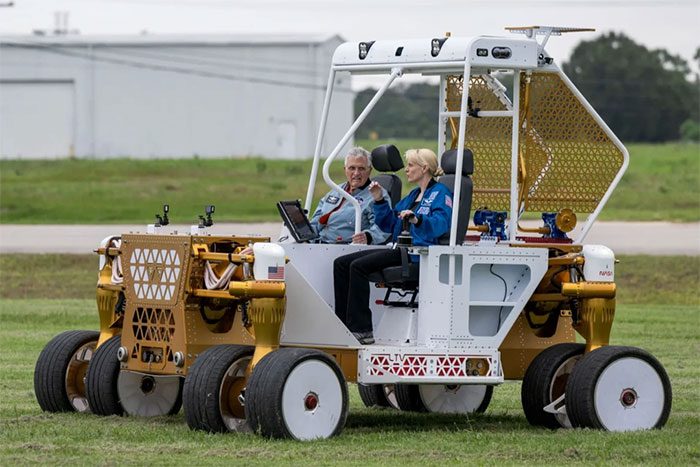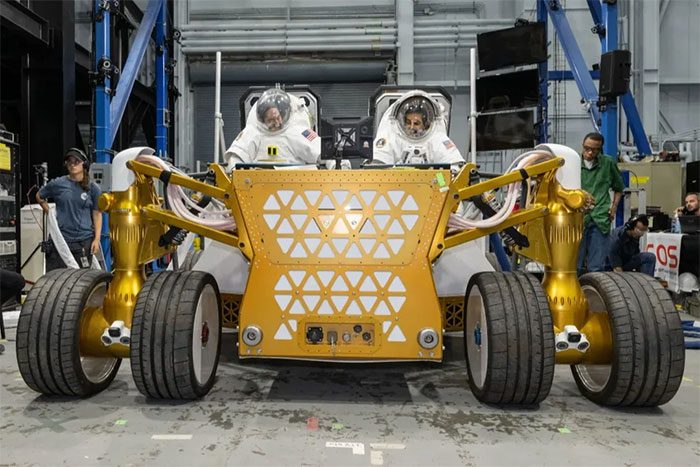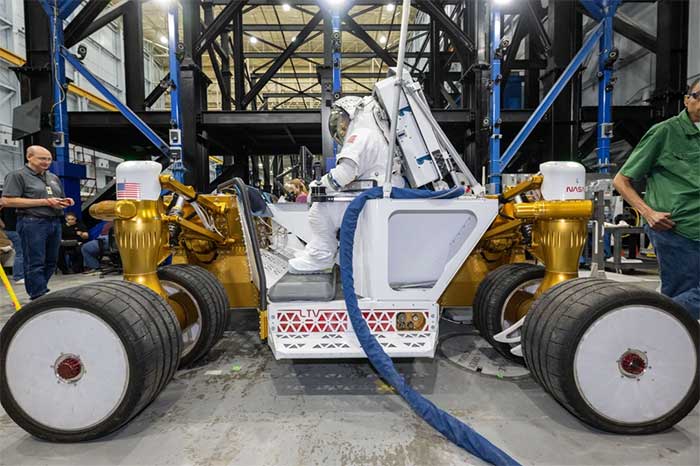The new generation of autonomous vehicles developed by NASA is inspired by the success of the Apollo Lunar Roving Vehicle, which was used during the Apollo missions in the 1970s.
NASA is developing a new type of Lunar Terrain Vehicle (LTV) for the Artemis missions. The new technology of this vehicle allows astronauts to conduct in-depth scientific research more easily.

NASA astronauts Kate Rubins and Harrison Schmitt with the prototype lunar rover at Johnson Space Center, USA (Photo: NASA).
The prototype, named Ground Test Unit (GTU), is currently being tested by NASA under simulated Earth conditions to assess its reliability before deployment.
This testing also allows astronauts to gain experience and practical skills in operating the vehicle.
A key feature of the new generation of autonomous vehicles is the absence of a pressurized cabin, meaning that drivers must still wear astronaut suits while operating the equipment.
The vehicle can support a maximum of 2 crew members and has remote operation capabilities. Additionally, it includes features such as autopilot, self-balancing, and automatic monitoring.
It is equipped with all necessary scientific instruments to help astronauts determine direction and communicate. Overall, the vehicle will enable astronauts to live and work safely and effectively on the Moon.


Close-up of the front and side of the lunar rover (Photo: NASA).
It is reported that starting in April 2024, NASA will contract lunar rover services, assigning tasks to three providers: Intuitive Machines, Lunar Outpost, and Venturi Astrolab.
These organizations are directly responsible for designing, testing, and providing new features for the rover for astronauts to use on the Moon’s surface.
The new generation of autonomous vehicles developed by NASA draws inspiration from the success of the Apollo Lunar Roving Vehicle, used during the Apollo missions in the 1970s. However, the new technological additions and features will enable missions to conduct more research and enhance scientific value.
It is expected that the Artemis missions 2 and 3 will be launched in 2024 and 2025 with the participation of astronauts on board.
Among them, Artemis 2 will serve as a high-level test for the Space Launch System (SLS) rocket and the Orion spacecraft. Meanwhile, NASA’s Artemis 3 mission will land humans on the Moon, marking the return of humans to the lunar surface after more than half a century.





















































